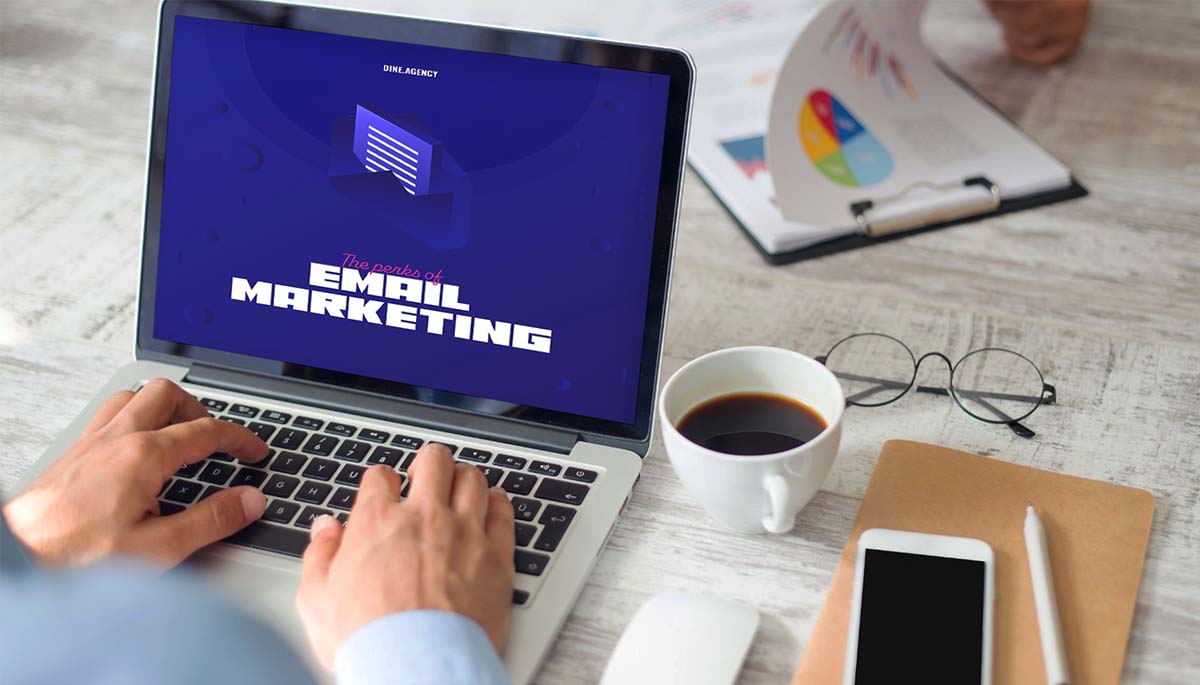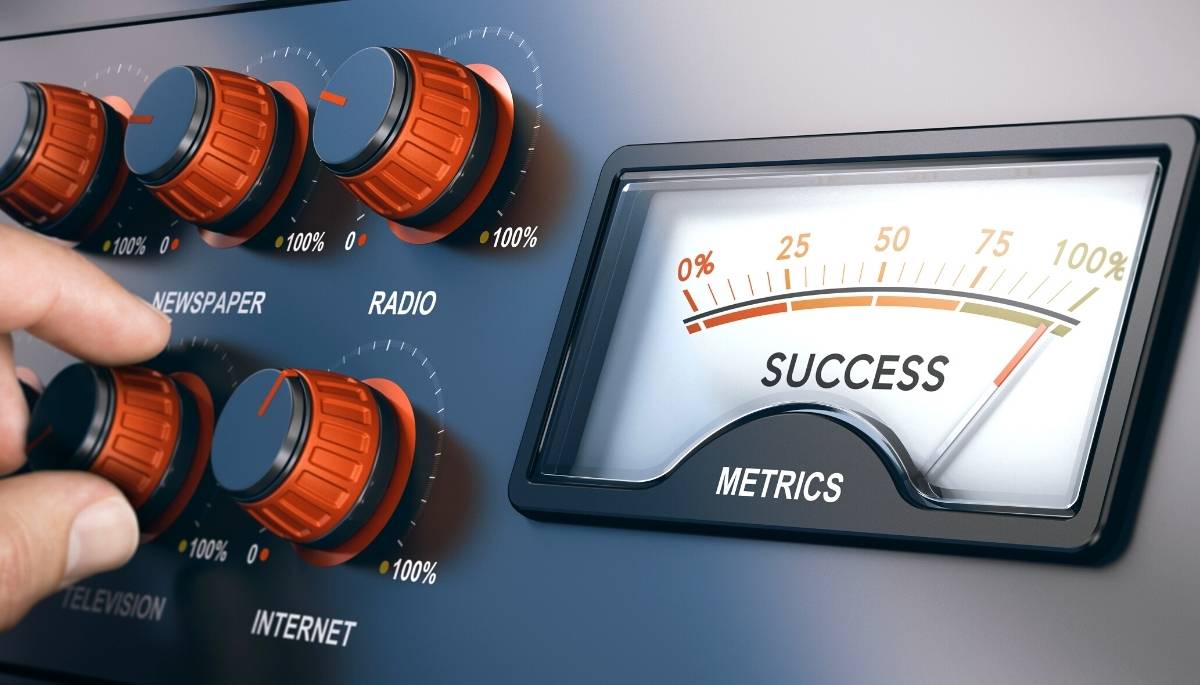
What is email marketing, and how can it benefit your business or brand? We’ll speak about email marketing best practices for how to write a newsletter capable of compelling the audience to act!

Newsletters are increasingly popular and for good reason. Businesses can derive substantial benefits from email marketing, provided the email campaigns are well-written and tailored to the audience.
📧 Part one gives a brief definition and offers ten reasons why every solid marketing strategy kicks off with newsletters.
💡 In part two, we’ll go through a checklist of best practices for your newsletter campaigns. Additionally, we’ll take a look at how you can measure the results of your newsletter campaigns!
PART 1 – WHAT IS EMAIL MARKETING & WHY DO WE NEED IT?
What is Email Marketing?
Email or newsletter marketing is a fundamental marketing channel used by businesses to distribute brand and product-focused content to a subscribed audience. Email campaigns help companies stay connected with their subscribers by delivering information directly to their inboxes.
What is a Newsletter?
In lay terms, an email newsletter is a newsletter distributed via electronic mail (or email for short). It refers to messages (comprising either plain text or design and text) delivered directly to a subscriber’s inbox.
Top 10 Reasons to Use Email Marketing
By allowing you to distribute business or product-focused content to a broad audience, newsletters help you build relationships with potential leads, expand your clientele, and increase brand awareness. This is why email marketing remains a core component of customer acquisition strategies for businesses across all industries, including food and hospitality.
But what has made email marketing so dependable for decades (the first email blast was delivered in 1978), and why do we believe its popularity will last for decades to come? Once you find out that just under 90% of Americans over fifteen use email, the prospects are beyond promising.
In short, email marketing is a cost-efficient and efficient solution with a vast outreach. A strategy following email marketing best practices can:
- Boost digital sales by promoting your services
- Reach people on any device (PC, laptop, smartphone, tablet)
- Attract new leads, clients, and turn casual buyers into loyal customers
- Increase your credibility and trust to strengthen relationships with clients
- Improve your brand image by communicating your brand values
- Increase website traffic by advertising your products, offers, or blogs
PART 2 – HOW TO WRITE A NEWSLETTER & MEASURE ITS RESULTS
Email Marketing Best Practices – Our Newsletter #CHECKLIST
When it comes to startups and small businesses, email marketing is a must-have. It provides a cheap, direct path to your website or eCommerce platform, and it’s amazingly effective when done right! This is why we’ll cover essential email marketing best practices describing how to write a compelling newsletter.
1. Tailored, Informative Content
To seed customer loyalty, you must keep your subscribers in the loop on the best offers and products your business has to offer. And, of course, nothing can showcase that better than a well-written copy.
Writing compelling and informative pieces of content starts with knowing the public you’re addressing. Additionally, what type of approach work best depends not only on the psychological characteristics of your audience but also on the goal you’re trying to achieve (e.g., convince your audience to visit your website, make a purchase, read a blog, and so on). Therefore, marketing tools like buyer personas and other audience analytics come in very handy.
2. Appealing Design
Design can hugely boost the effectiveness of your email newsletter campaigns. In brief, a balanced, beautiful format will motivate the users to read and click. After all, most people won’t even bother reading something they find unappealing at first sight.
The main takeaway is that a recognizable, well-structured design fortifies your brand identity. How does that happen? When the format of your message is familiar and coherent with your overall brand image, it forges a spot for your brand in your customers’ mind maps. The best part? You don’t need a new template for every newsletter because you can (and you should) use recurring design elements.
3. Uncluttered Format
When speaking of format, we’re referring to the overall aspect and effect of your newsletter email. Content and design must blend into a focused, balanced and neat unity.
With newsletter content, you shouldn’t strive to speak about or achieve too many things at once. Instead, as a rule of thumb, emphasize one single aspect and provide short but specific information in a language that your audience can understand. Otherwise, you run the risk of muddling your customer’s (already short) attention span.
Of course, you may also run the same risk with unfitting design and formatting. Make sure your newsletter templates should feel as orderly, easy to scan, and pleasing to look at as possible.
4. A Well-Timed Schedule
First, you must research when most of your audience is online and most likely to respond to your calls to action. Then, in terms of frequency, it has been observed that, optimally, you should send newsletters at least once per month but no more than twice a week.
No matter the chosen frequency, don’t forget to pay attention to the date and time and make sure your email campaigns abide by a consistent schedule. The golden rule remains the “mid-week, mid-day” approach. We also advise you to utilize helpful tools such as Mailchimp’s “Send Time Optimization.”
5. Creative Headlines (or Subject Lines)
If you’ve tried sending out newsletters before, but your open rate has fallen short of expectations, here’s what your biggest hurdle may be. Ivesp has assessed that 47% of recipients open an email wholly based on its subject line, whereas 69% may even report email as spam judged on the same criterion.
Quick rules: headlines should have roughly 6 to 10 words, give or take. They should be clear, creative, focused, and swiftly capture the interest of your subscribed audience. Of course, buyer personas and other insights into your customers’ psychology can guide your choice of words. Still, the best way to refine your headlines remains A/B Testing, also known as A/B Split Testing. Lastly, keep a distance from spam-like words and phrases (cheap, free, earn cash, fast money, apply now), special characters (*#%@), and “salesy” or overly flashy approaches.
6. A Friendly Preview Text
The preview text is yet another content-related aspect vital to the success of a newsletter campaign. This is a short message displayed just below the subject line to let users know what your newsletter is about. Since it sits up above the header area of your email, it’s also called a preheader.
Now, remember that you have between 50 to 130 characters available for your preheader text, depending on your email client — which also means there is no such thing as an ideal length (remember, people also view emails using different devices). Ideally, try to deliver your email’s gist in the first portion of the preview text and use it together with the subject line to create a compelling message. Don’t forget to be precise and honest: you might immediately trigger an unsubscribe or report action if these essential elements appear misleading.
7. Viewable on Mobile devices
According to Litmus, mobile users account for more than 41% of all email opens (the highest still, followed by webmail with 40.6%). Therefore, in today’s technological environment, it is imperative to optimize both the text and the design of your newsletters for mobile devices. This is known as mobile-friendliness (or mobile responsiveness in the case of websites).
8. Consistent With your Brand
When we spoke about the benefits of email marketing, we’ve listed the potential to improve your brand image by communicating and solidifying your brand values. Of course, this requires you to stay consistent in terms of approach, design practices, customer experience, and some other core brand identity elements. Why the effort? As we’ve already pointed out, people favor and interact more often with brands they can easily recognize.
9. Motivates the Audience to Act
Calls to action (known as CTAs) are simple buttons placed strategically in a newsletter to trigger the reader’s reaction. Done right, they are highly effective tools for persuading a user to click a link and fulfill the advertiser’s expectations (read a blog, shop a product, visit a landing page, and so forth).
Therefore, we advise including at least one CTA in your email newsletter to spur the reader’s interest and make the next step easy to understand and complete. A few common CTAs are “order today,” “apply now,” or “visit our website.
Email Marketing Campaigns: Main Goals & How They’re Measured
1. Newsletter Reads
Perhaps one of the most important things is the email’s open rate, which denotes how many users open and visualize your newsletters.
2. Desired Action Fulfillment
First, we measure this with the click-through rate (CTR). The CTR refers to people who open your emails and click links in your newsletter (such as the ones leading them to landing pages on your website).
3. ROI per Campaign
As with any marketing campaign in which you have invested real resources, you must ultimately analyze the return on your investment or ,simply, ROI (explained in this this article by Adobe Marketo
Engage).
EMAIL MARKETING BEST PRACTICES – FINAL THOUGHTS
We’ve seen what is email marketing, what are the core email marketing best practices, and how to write a newsletter that motivates your audience to act. However, keep in mind that we have merely touched upon the fundamentals.
If you thought about launching an email marketing campaign for your foodservice business but you’re not sure how to get started, send us a message to get in touch with one of our marketing experts.
Don’t forget to check out more on digital marketing in the F&B sector:
How to Choose a Digital Marketing Agency for Your Online Business
Digital Marketing Services for the Food and Beverage Industry – 6 Tips for 2021


